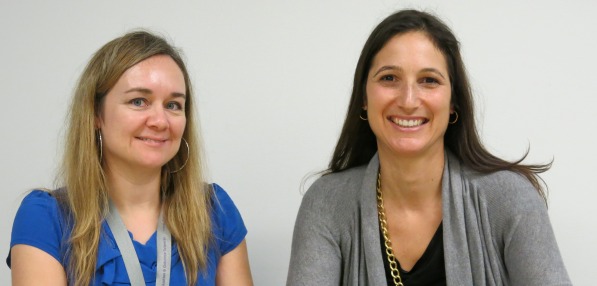CST: How we will evaluate our success
“Has Clinical & Systems Transformation (CST) delivered the key benefits we were striving for?” As CST gets closer to implementation at sites across VCH, PHSA and PHC, Beth Snow and Natalie Henrich will be evaluating the answer to this important question.
“Ultimately, this project is about improving patient care,” says Beth, program evaluation lead. She is leading a complex process that will evaluate CST’s effectiveness. “Every one of us – and our family and friends – are patients of the healthcare system. Knowing that their care could be safer and more effective, and staff could have the tools they need to do their job well, is exciting.”
Beth, together with Natalie – an evaluation scientist – will gather and analyze information that could lead to modifications to the project, decisions about its future and the development of other programs.
“We’re helping to identify which things need to either be promoted or modified in order to achieve project goals,” says Natalie, adding that unless this information is tracked, it’s not known if CST is doing what it’s supposed to do – and why or why not.
The first thing the evaluation team did was ask CST leaders what benefits they wanted to achieve through the project. The benefits selected for the framework are those that are seen to be most important in defining CST’s success. Previous benefits work completed in phase one of the project was leveraged for this too.
Now, they are gathering a broad representation of people to work through how we’re going to get to those benefits. From there, the team will plan what data they need to measure to find out if the benefits have been realized.
As sites get ready to go live, the team will be collecting baseline data so they can see the magnitude and direction of changes once the new clinical information system is implemented. This means using information that is already electronically available, doing chart audits, observing work, interviewing staff and more.
“It’s not just about having the numbers; we need to understand the story behind the numbers. We need to get that from talking to people,” says Natalie.
The team will identify what can be improved so CST can be as successful as possible, as well as learn what’s going well so those things can continue or be increased.
Lessons learned are key, says Beth. She adds that CST has looked to other organizations to see what can be learned from them. Sharing our wins is important too. Although it will be challenging, the team is looking forward to contributing to the success of the project.
“To play a role in a project that has the potential to produce such important benefits is really personally satisfying,” says Natalie.
Background information
- Clinical & Systems Transformation (CST) is a joint initiative of VCH, PHSA and PHC, and one of the largest and most complex healthcare projects in Canada. It spans across several areas of the continuum of care including: acute care inpatient and outpatient units and ambulatory care. As well as creating consistent, leading practices, and a shared clinical information system, CST will deliver HIMSS Level 5 functionality.
- Clinical design teams, made up of hundreds of highly-skilled, multi-disciplinary professionals from across the three Health Organizations and Team IBM (experts from IBM Technical Services, Deloitte, Leidos Solution Builders, and the University of Pittsburgh Medical Centre), started work on April 7, 2014. These teams are tasked with designing our future workflows, based on leading practices. In doing so they are defining the requirements for our new clinical information system.
Visit CSTproject.ca for more information and regular updates, and to submit suggestions for future articles. If you have questions or feedback, please email info@CSTproject.ca or contact Donna Stanton, CST Executive Director and Transformation Lead, VCH at Donna.Stanton@vch.ca.

